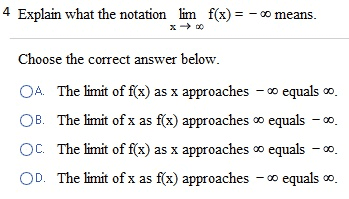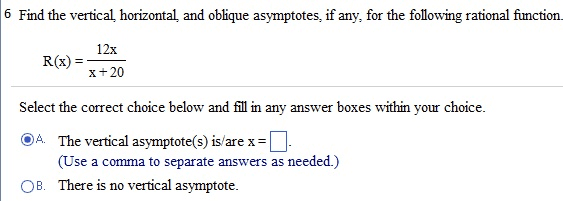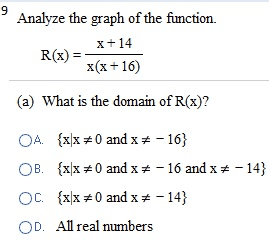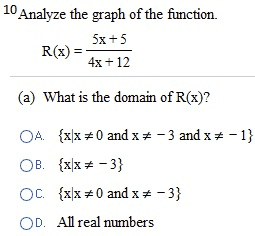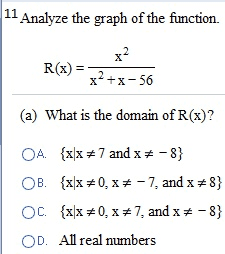MTH 107 Lecture Notes - Lecture 9: Precalculus

MTH 107
Precalculus Mathematics I
5.2 Properties of Rational Functions Notes
L. Sterling
Abstract
Provide a generalization to the terms listed in this section.
Rational Functions
•Rational functions are functions that are in the common form of R(x) = p(x)
q(x), which shows
where both p(x)and q(x)are polynomial functions while it’s only q(x)can’t be a zero
polynomial.
–This would generally mean the following:
q(x)6= 0
•When you are trying to figure out the domain, besides that fact that q(x)6= 0, then you find
out that it [the domain] will be all real numbers.
•If you have any rational function that is in the general form of R(x) = p(x)
q(x)in its lowest
form, then you’ll have Rwill have a vertical asymptote for each and every value of xfor
which q(x) = 0.
Rational Functions Examples
f(x) = 25x
x2−5
g(x) = −2x
5
h(x) = −2x+ 5
5x−2
Horizontal Asymptote
•A horizontal asymptote is a horizontal line, which is y=b, that occurs when xis approaching
when either −∞ or ∞, which would make one of two things occurs:
lim
x→∞ (f(x)) = b
or
lim
x→−∞ (f(x)) = b
•Horizontal asymptote helps describe a function’s end behavior.
•A function’s graph can intersect a horizontal asymptote, can wouldn’t intersect a vertical
asymptote.
1
find more resources at oneclass.com
find more resources at oneclass.com
Document Summary
5. 2 properties of rational functions notes: sterling. Provide a generalization to the terms listed in this section. Rational functions: rational functions are functions that are in the common form of r (x) = p(x) q(x) , which shows where both p(x) and q(x) are polynomial functions while it"s only q(x) can"t be a zero polynomial. Rational functions examples f (x) = g (x) = . R (x) = p (x) q (x) anxn + + a1x + a0 bmxm + + b1x + b0. What is q(x)"s degree is greater than p(x)"s degree: this occurs when the denominator"s degree is larger than the numerator"s degree, m > n, horizontal asymptote: y = 0. What is q(x)"s degree is less than p(x)"s degree: this occurs when the numerator"s degree is larger than the denominator"s degree, m < n, horizontal asymptote: n one.






